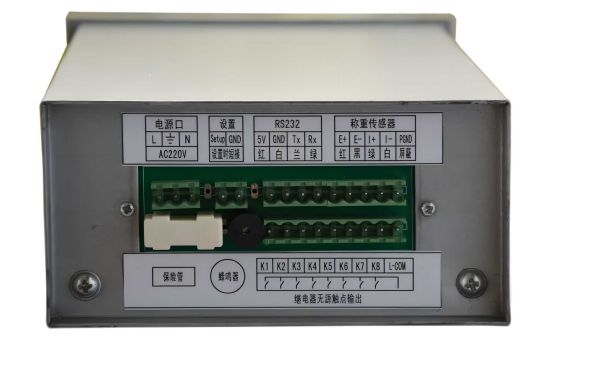This is where weighing threshold controllers come into play, offering a sophisticated solution to enhance the accuracy and consistency of filling operations.
Understanding Weighing Threshold Controllers
Weighing threshold controllers are advanced devices used in automated filling systems to ensure precise measurement and dispensing of materials. These controllers work by continuously monitoring the weight of the product being filled and adjusting the filling process in real-time to achieve the desired weight with minimal deviation. The key components of a weighing threshold controller typically include a high-precision scale, sensors, and a control unit that processes the data and manages the filling mechanism.
Benefits of Weighing Threshold Controllers
- Enhanced Accuracy
The primary advantage of using weighing threshold controllers is the significant improvement in filling accuracy. Traditional filling methods, such as volumetric or time-based systems, can be prone to variations due to changes in material density, temperature, and flow characteristics. Weighing threshold controllers, however, measure the actual weight of the material being dispensed, ensuring that each container receives the precise amount specified.
- Consistency and Repeatability
Consistency is crucial in manufacturing and packaging. Customers expect each product to meet the same quality and quantity standards. Weighing threshold controllers provide repeatable accuracy, ensuring that every filled container matches the target weight. This consistency helps maintain product quality and reinforces brand reliability.
- Reduced Product Waste
Inaccurate filling can lead to overfilling or underfilling containers. Overfilling results in product waste and increased costs, while underfilling can lead to customer complaints and regulatory issues. By maintaining precise control over the filling process, weighing threshold controllers minimize product waste, leading to cost savings and a more efficient use of materials.
- Compliance with Regulations
Many industries are subject to strict regulations regarding product weights and measures. Weighing threshold controllers help manufacturers comply with these regulations by ensuring that each filled container meets the required weight specifications. This compliance is essential for avoiding fines and maintaining a good reputation with regulatory bodies.
- Adaptability to Different Products
Weighing threshold controllers are highly versatile and can be adapted to fill a wide range of products with varying characteristics. Whether dealing with viscous liquids, fine powders, or granular materials, these controllers can be calibrated to accommodate different product properties, ensuring accurate and consistent filling across diverse applications.
How Weighing Threshold Controllers Work
The operation of a weighing threshold controller can be broken down into several key steps:
Initial Setup: The desired target weight and acceptable tolerance range are programmed into the controller.
Filling Process Initiation: The filling operation begins, and the material is dispensed into the container.
Real-Time Monitoring: The controller continuously monitors the weight of the material being filled using high-precision sensors.
Dynamic Adjustment: As the container approaches the target weight, the controller adjusts the filling speed and, if necessary, activates a fine-tuning mechanism to achieve the exact weight.
Final Check: Once the target weight is reached, the filling process stops, and the filled container is verified to ensure it meets the specified criteria.
Conclusion
Weighing threshold controllers represent a significant advancement in the field of automated filling operations. By providing unparalleled accuracy, consistency, and adaptability, these controllers help manufacturers optimize their processes, reduce waste, and comply with regulatory standards. As technology continues to evolve, the role of weighing threshold controllers in improving filling accuracy will only become more critical, paving the way for more efficient and cost-effective manufacturing practices.








